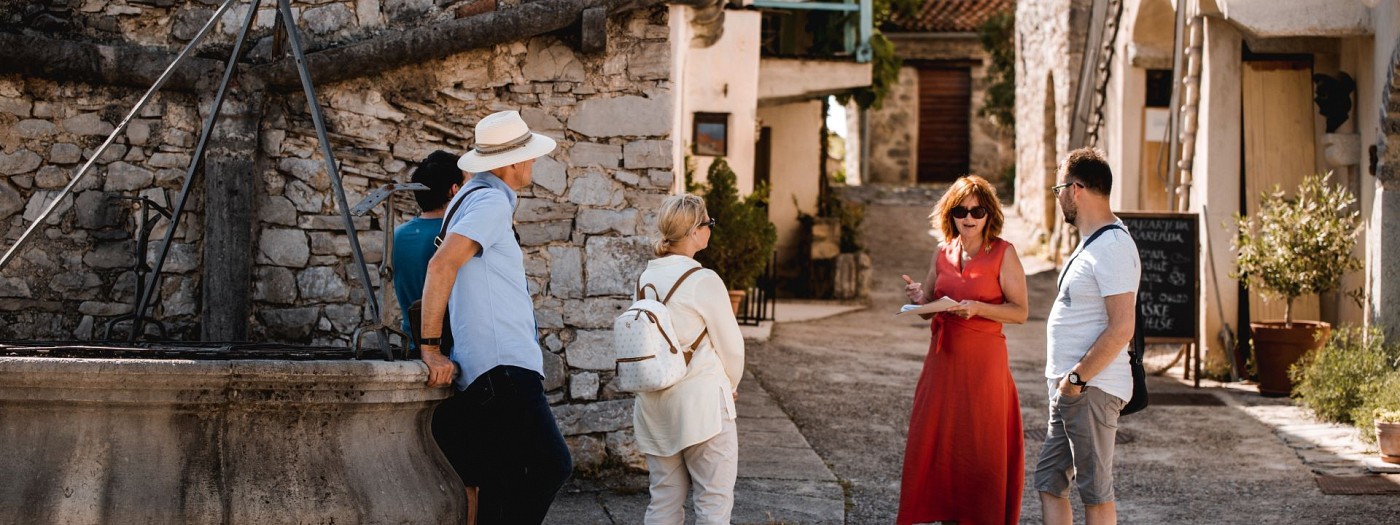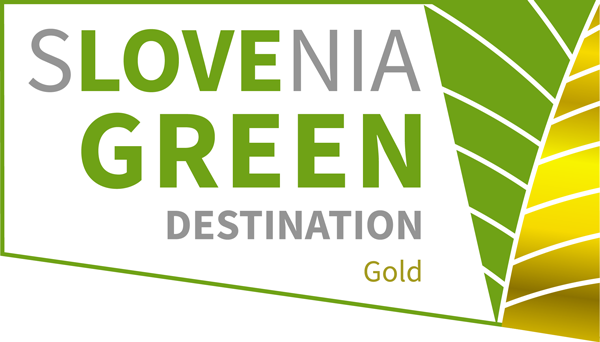
Štanjel
This medieval village is a showpiece of Karst architecture and culture.
Štanjel, as one of the oldest settlements in the Karst, first enchants visitors with its unique panoramic views. The village is built on the picturesque terraces of Turn Hill, catching the eye with its famous buildings. The castle complex, the defence walls, the Church of St. Daniel with its lemon-shaped bell-tower, the nucleated village and the Ferrari Garden are the best recognisable architectural heritage of the old settlement, which has been altering its image over the centuries while always retaining the true soul of the Karst. The village was named after the patron, St. Daniel, and in many respects is a unique cultural monument.
Owing to its strategic position, Turn Hill was inhabited already in prehistoric times. Remains of a Roman fortress called Gledanica have been preserved since Antiquity, while the settlement with houses was built on the terraces during the Middle Ages. The village was first mentioned in written sources in 1402. The settlement was walled in the 15th century to protect against invasions by the Turks. Štanjel reached the pinnacle of its development in the 16th and 17th centuries. It is from those times that the settlement’s ground plan originates, with all the narrow alleys, together with most of the architectural building characteristics.
During the two world wars, Štanjel had a mark left on it by the architect and then mayor Maks Fabiani. His 20-year work in the village includes many spatial interventions that reflect the architect’s vision. With a far-sighted and innovative approach, he upgraded the space with architectural solutions that adjusted the old settlement to suit the needs of modern life. He consistently safeguarded the village’s spirit and, with a visionary touch, gave the renovated buildings and facilities a new breath of life. It is to his credit that the castle became a place for community happenings. Already then, he thought about accessing the village by car and he also tackled the water supply problem that is an issue of particular importance in Karst settlements. The most important of Fabiani’s works in Štanjel include renovation of Ferrari Villa and the design of the Ferrari Garden with a park, considered the most important park landscaping in Slovenia from the inter-war period.
During World War II, part of the settlement was burnt down and the castle was seriously damaged. Revitalisation of the old village core and the castle’s renovation started in the 1960s and have continued until today. After World War II, the new part of the settlement developed on the plains at the foot of Turn Hill.
Today, Štanjel is an important Karst cultural centre, hosting many cultural and scientific events. The renovated castle stages exhibitions of museum collections, where the Maks Fabiani Exhibition is of special interest. The castle is also home to the Lojze Spacal Gallery as the main centre of fine arts; Štanjel also features small galleries with many works of art.
Opening hours
WINTER SCHEDULE (October – March)
- Monday – Sunday:
9:00 – 11:00 and 12:00 – 16:00
SUMMER SCHEDULE (April – September)
- Monday – Friday:
9:00 – 11:00 and 12:00 – 17:00 - Saturday – Sunday:
9:00 – 11:00 and 12:00 – 18:00
- For groups
- Accessible tourism
- Business tourism
- Family with children
- Organisation of events and weddings





